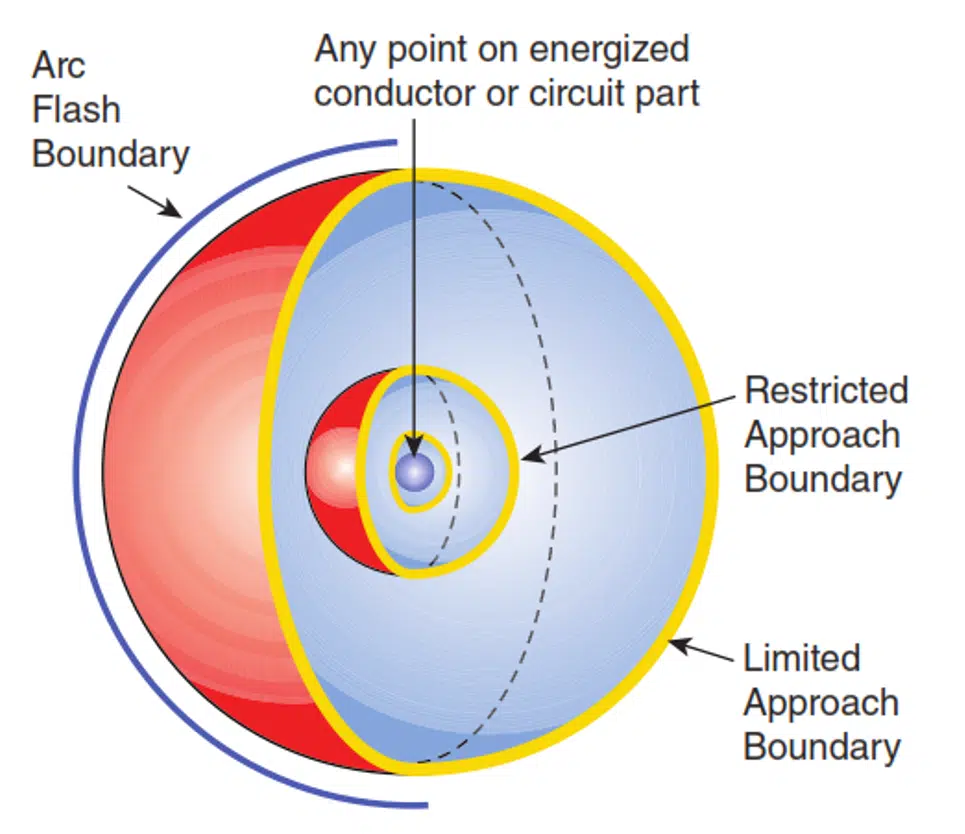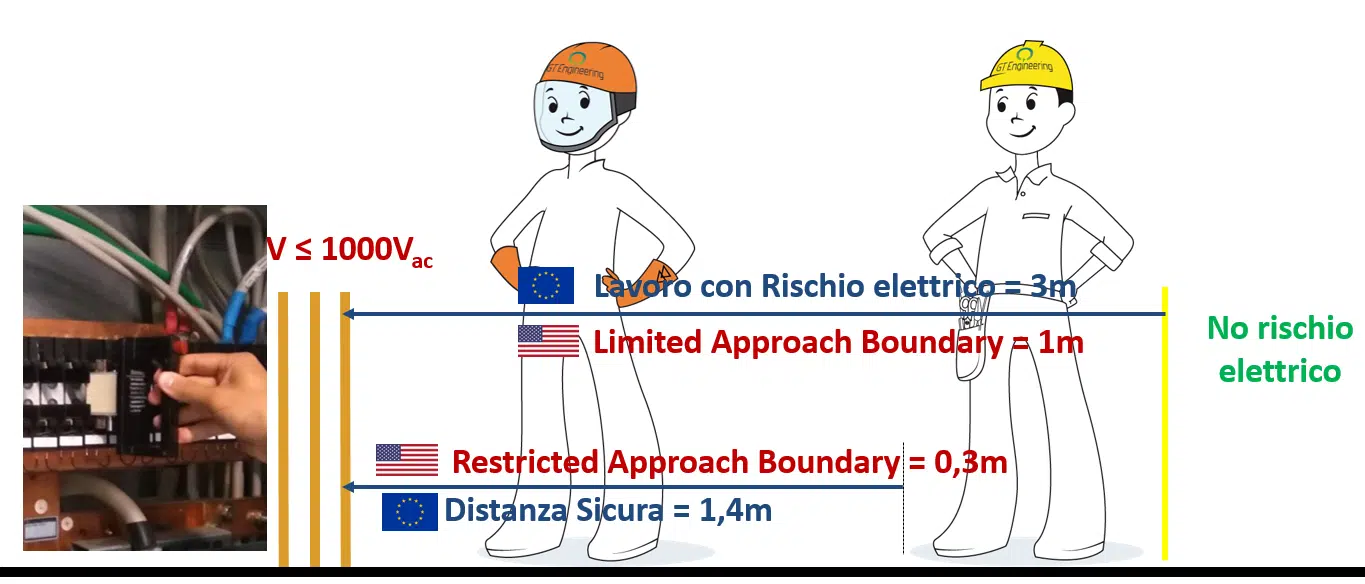Last edit: 03/03/2023
Introduction
In Electrical Works, in addition to the risk of direct contact with unprotected active parts, there is the risk of being hit by an electric arc.
North American legislation, and in particular the US one, is very precise on the management of this risk.
NFPA 70E: Standard for Electrical Safety in the Workplace
Arc Flash Boundary

Arc Flash Boundary: It is the limit below which any electric arc exceeds the value of 5 J/cm2 (1.2 cal/cm2), considered the dangerous threshold. Therefore, if you work outside of the Arc Flash Boundary, no special PPE is required for to the risk of arcing.
The Arc Flash Boundariy depends both on the value of the short-circuit current at the installation point and on the opening time of the line in the event of a fault. The obligation to calculate this distance does not lie with the manufacturer of the switchgear but with the user of the machinery, however the latter can "pass on the burden" during the request for offer.
In that case, don't hesitate to contact us!
Finally, the PPE for Arc Flash can be divided into four categories ranging from Category 1 to 4; as the category increases, the degree of protection of the PPE increases.
Limited and Restricted Approach Boundary
These distances generally concern the electrical risk. They are therefore not specific for the arc flash.
– Limited Approach Boundary: It is the distance beyond which there is an electrical risk. For work under this distance, a written permission is generally required.
– Restricted Approach Boundary: It is the distance beyond which the worker must wear electrical PPE, given that the risk of contact with active parts becomes significant.

Arc Flash Labels
Another important value, according to the NFPA 70E standard, is the intensity of the Arc Flash at about 0.5 m from the active parts with risk of arcing. In other words, we want to inform the employee of the arc intensity value in case the accident happens when he is at a distance of 18 "(about 45 cm). Of course, if > 1.2 cal/cm2, it is a dangerous arc that requires certain arc protection devices.
– Working Distance: e.g. 18"
– Available Incident Energy: e.g. 7 cal/cm2
All information on the Arc Flash Hazard must be indicated on a label which must be visible outside the panel. Examples are given below.
GT Engineering does complete analyzes, as required by the NFPA 70E regulation, on the risk of Arc Flash.
